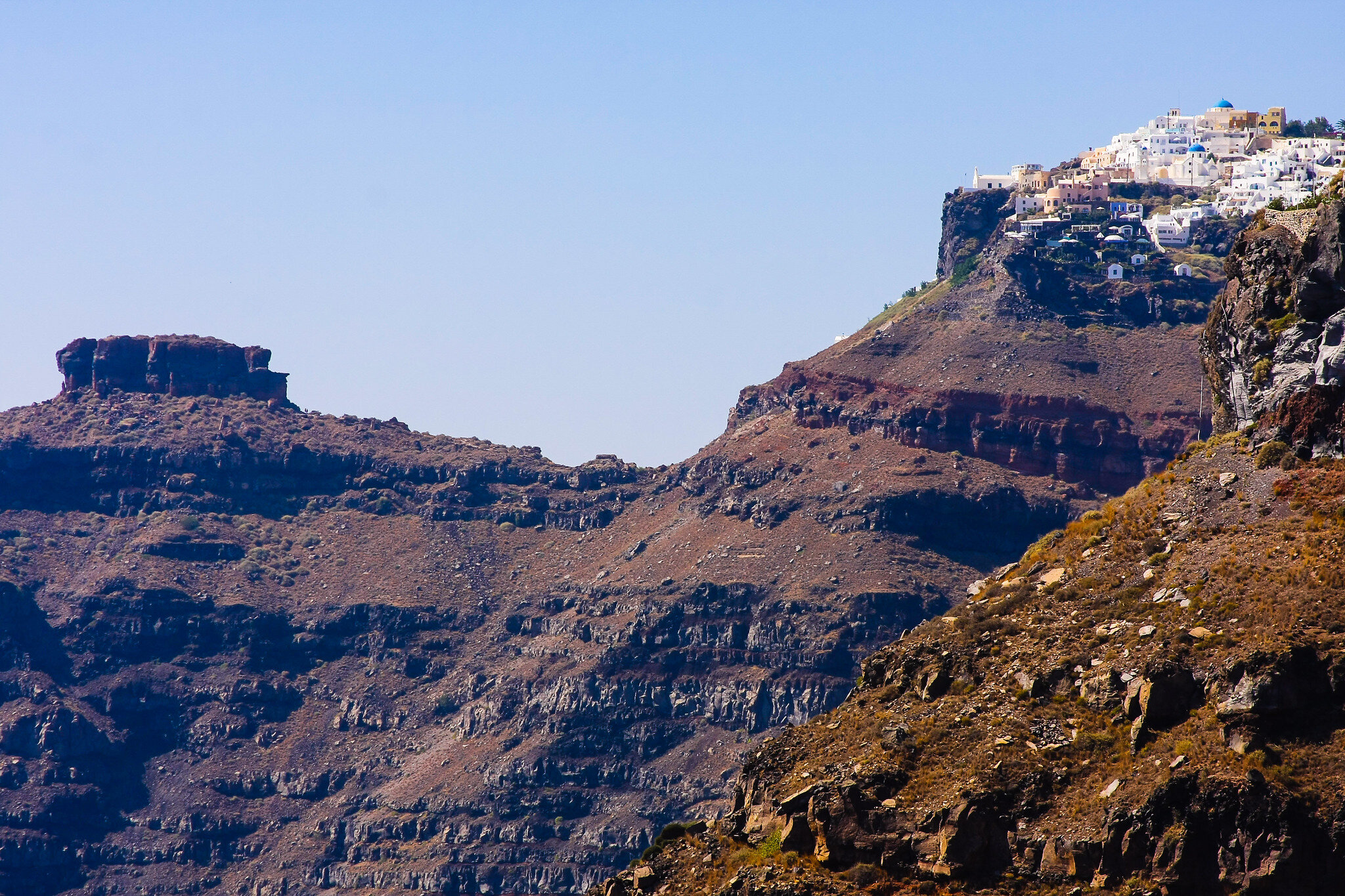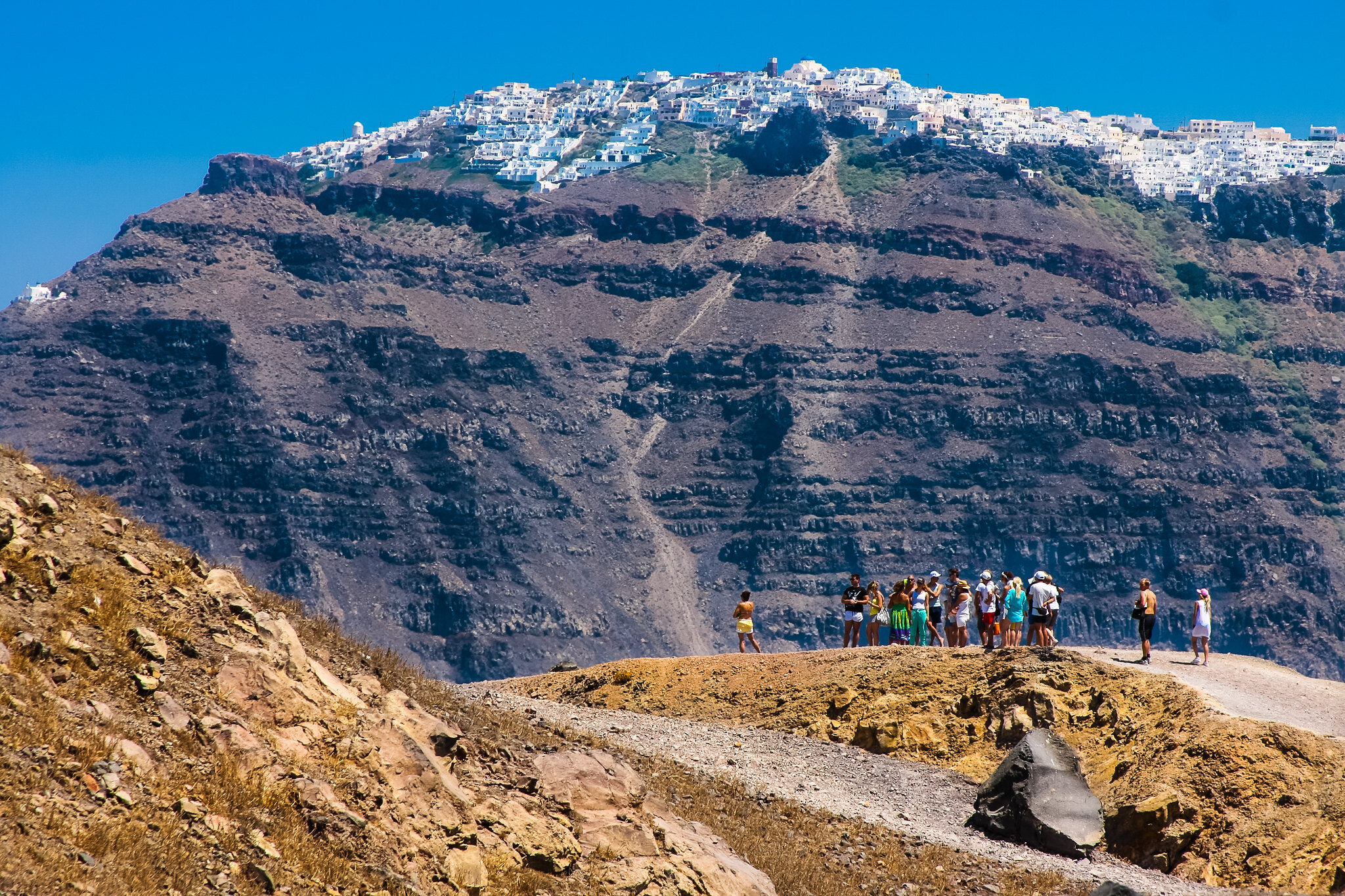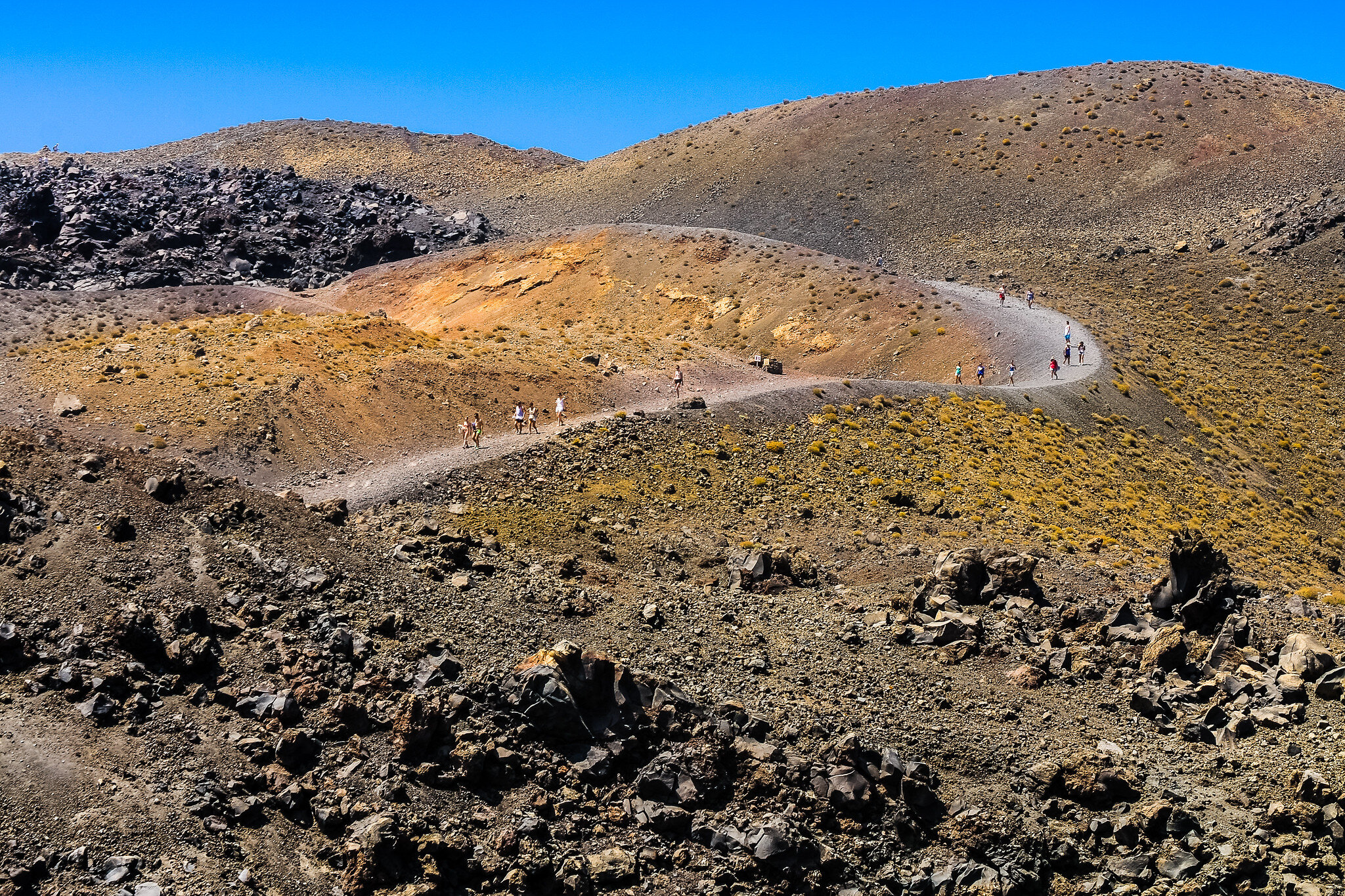Santorini
Santorini is an active volcano, although dormant, composed of several islands some uninhabited. Its eruption around 3,600 years ago is the biggest in recorded history becoming the most famous single event in the Aegean before the fall of Troy. Happening at the height of the Minoan civilization, it may have been the cause of their collapse on Crete from an enormous tsunami, and also be directly connected to the myth of Plato’s Atlantis with Thera, the island’s capital, now considered the site. The eruption left a large caldera, an interior lagoon, hundreds of metres deep. Nea Kameni, an underwater volcano, has been the centre of activity since its 1707 surfacing, erupting as recently as 1950, six years before the island was hit by a powerful earthquake. Archeological discoveries in the ancient town of Akrotiri have revealed streets preserved in volcanic ash with buildings of multi levels, a developed drainage system and fine wall paintings which confirm a level of a sophisticated culture comparable to Pompeii. Santorini was deserted after 1600 bc until Phoenicians arrived and founded Thera, calling the island Callista and remaining for several hundred years. The island didn’t join the Delian League in the Peloponnesian War but sided with Sparta against Athens. In the Hellenistic era it became a significant naval base for Ptolemaic Egypt. It came under Roman occupation, and then the Byzantines under whose rule an eruption took place in 727, with a vivid description by the historian George Cedrenus who mentions vapour like an oven’s fire boiling for days in the middle of the caldera coming from the depths of the sea and turning to black stone.
Happening at the height of the Minoan civilization, it may have been the cause of their collapse on Crete from an enormous tsunami, and also be directly connected to the myth of Plato’s Atlantis with Thera, the island’s capital, now considered the site.
View of Thira, Santorini
The island’s modern name first appears in 1153 - 1154 in the work of Muslim geographer al-Idrisi, who called it ‘Santurin’ by combining the name of its patron saint Saint Irene. The Venetian Barozzi dynasty took control after the Fourth Crusade until it was annexed to the Duchy of Naxos in 1335 by Niccolo Sanudo. The Turkish principalities of Mentesche and Aydin raided between 1318 and 1360 without causing much damage. From the 15th century, the control by the Republic of Venice was confirmed in treaties with the Ottoman Empire though the Ottomans continued to raid until it came under their possession through Admiral Piyale Pasha in 1576, part of the process of annexing the majority of remaining Latin territories in the Aegean. The island maintained its privileged status of semi-autonomy until 1700 but incurred Venetian attacks during the Ottoman - Venetian wars. It was captured by Russians during the Russo - Turkish War of 1768 - 1774, but then returned to Ottoman control. Santorini took part in the Greek War of Independence in 1821. It’s still home to a Catholic community and the seat of a Catholic bishopric. It was occupied during the Second World War first by Italian forces in 1941 and then by the Germans in 1943. Source: Wikipedia / Santorini
Its eruption around 3,600 years ago is the biggest in recorded history becoming the most famous single event in the Aegean before the fall of Troy.
My first visit was in the mid-1970s, and how amazing it was. Things were simpler with far less people around. Perhaps this is why my focus on Santorini for the project has been solely on the volcano and the interior caldera walls, unchanging as they are throughout modern history.
View of Skaros Rock and Oia, Santorini
The island came under Romanan occupation, and then the Byzantines under whose rule an eruption took place in 727, with a vivid description by the historian George Cedrenus who mentions vapour like an oven’s fire boiling for days in the middle of the caldera coming from the depths of the sea and turning to black stone.
View from the Volcano towards Thira, Santorini















